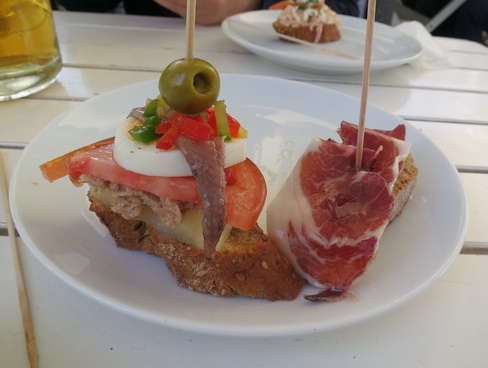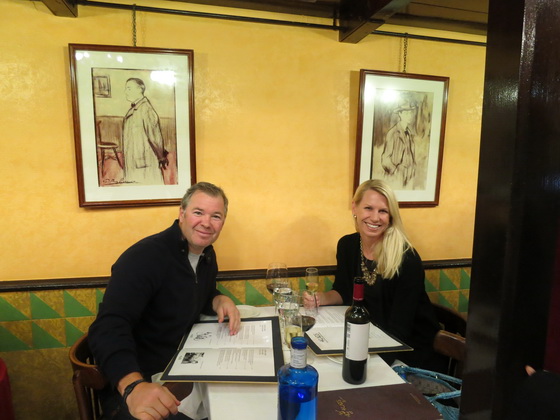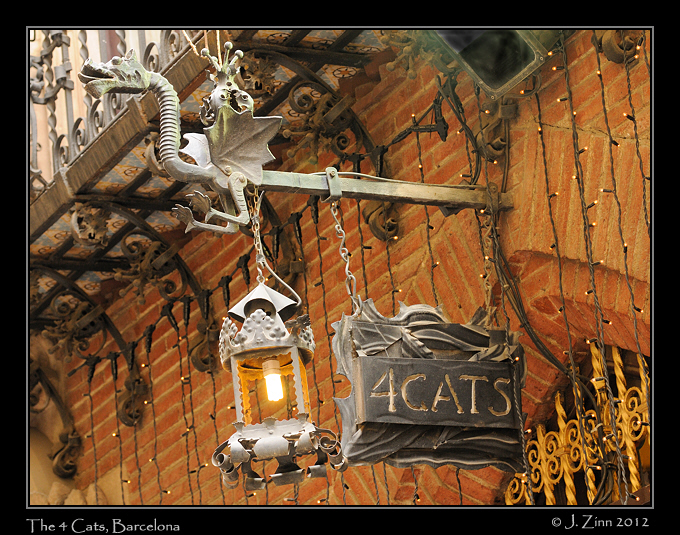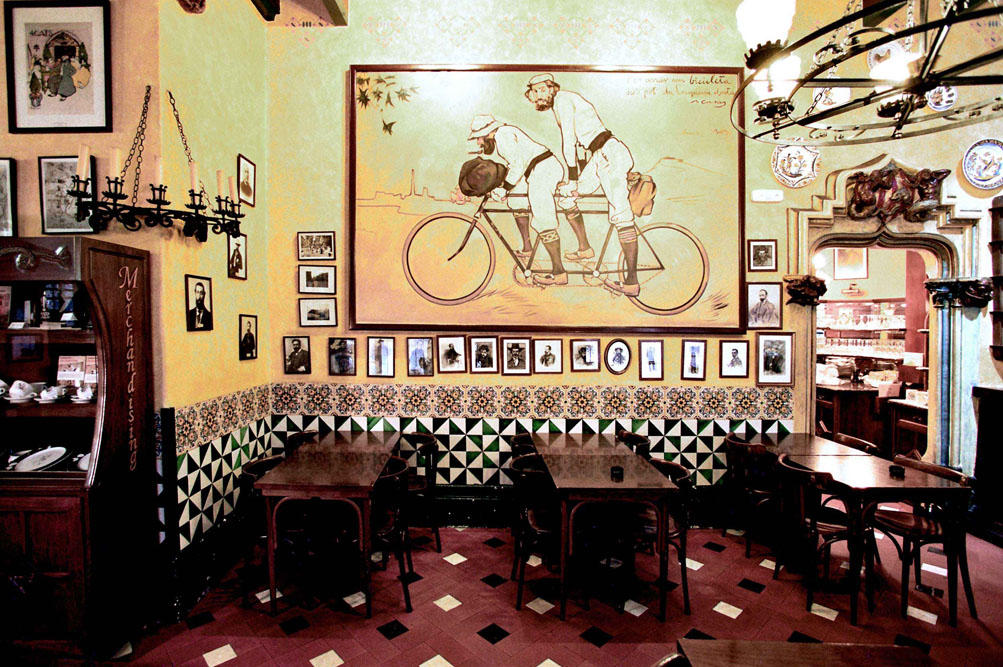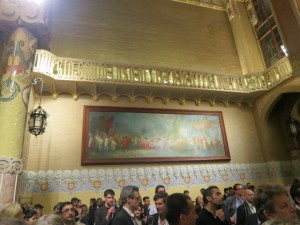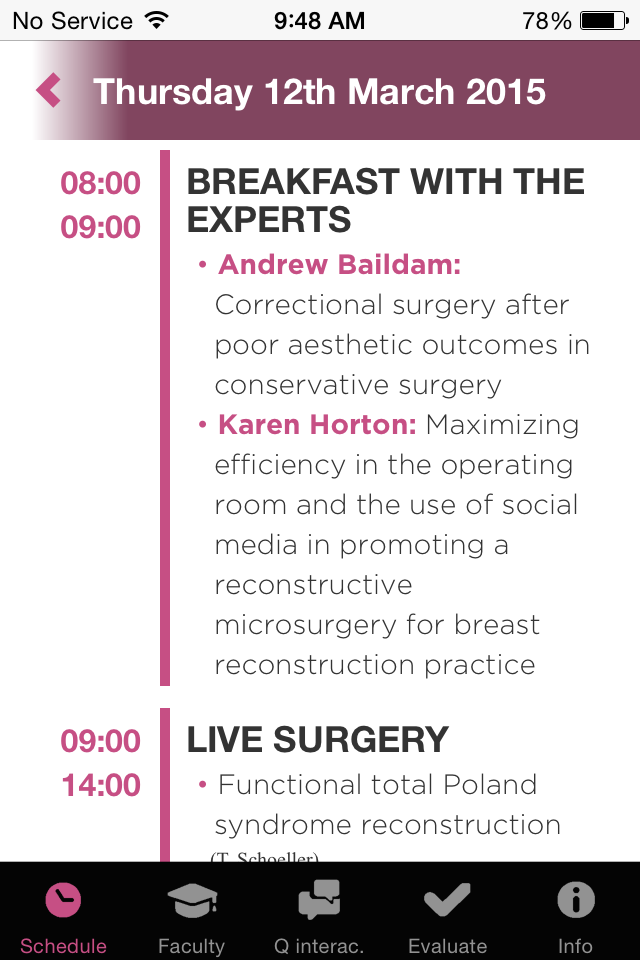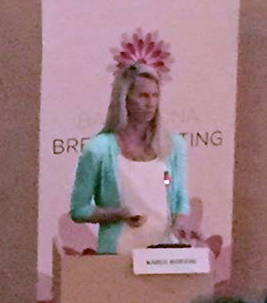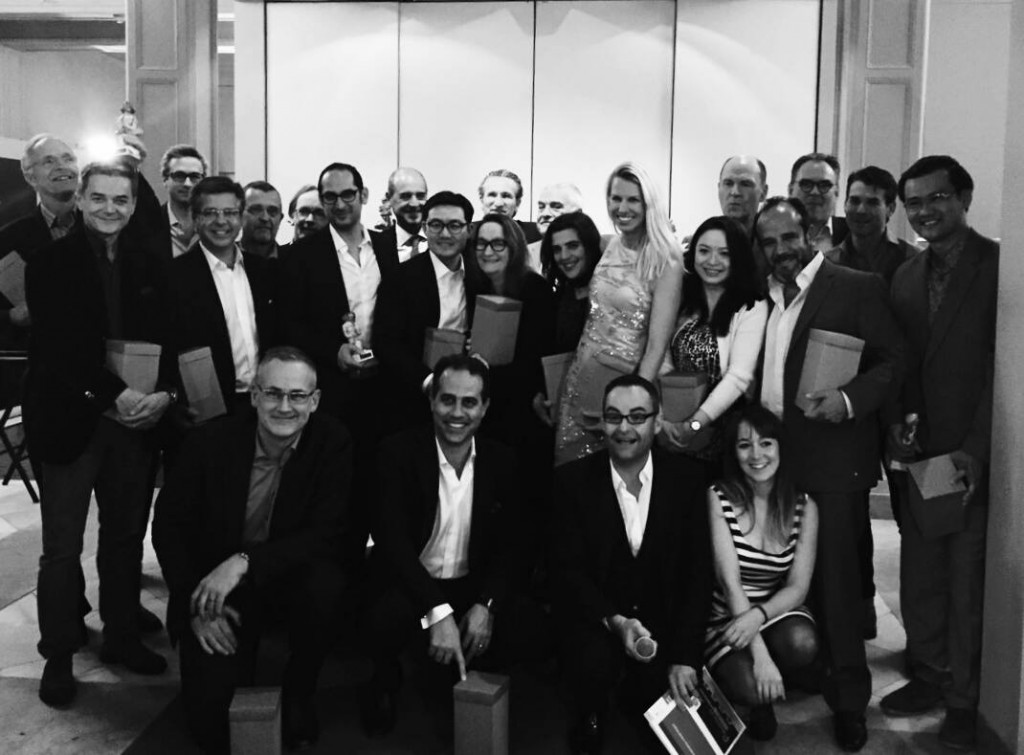Barcelona Breast Meeting 2015
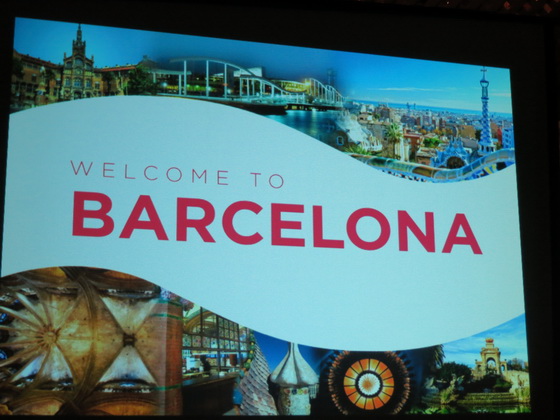 I was honored to travel to Barcelona, Spain recently as an invited guest Faculty member for the 2015 Barcelona Breast Meeting: In Search of Breast Surgery Excellence. With over 350 attendees from 26 countries, this three day conference focused on oncoplastic surgery, reconstructive and cosmetic surgery of the breast. Two live surgeries were broadcast to attendees of the conference, patients were presented and the latest technology for imaging lymphatic vessels was featured, and I was honored to present 5 lectures to my colleagues on a variety of topics.
I was honored to travel to Barcelona, Spain recently as an invited guest Faculty member for the 2015 Barcelona Breast Meeting: In Search of Breast Surgery Excellence. With over 350 attendees from 26 countries, this three day conference focused on oncoplastic surgery, reconstructive and cosmetic surgery of the breast. Two live surgeries were broadcast to attendees of the conference, patients were presented and the latest technology for imaging lymphatic vessels was featured, and I was honored to present 5 lectures to my colleagues on a variety of topics.
I am happy to share my experience with my patients and readers of my blog:
My visit started out with just less than 2 days to explore the city. My husband Mike accompanied me, and we saw just a few sites, including some of Gaudi’s creations, we indulged in Jamon and tapas, and stumbled upon a cool restaurant frequented and befriended by Picasso:

One of my favorite things about Barcelona – the jamon (Iberian ham) hanging in the front of every restaurant!
The conference began on March 11th, with a Faculty dinner the evening before in the Gothic area of Barcelona. I met other presenters from countries including Italy, Germany, Mexico, Spain, Belgium, Finland, England, Argentina, Singapore, France and Hong Kong.
I was one of three presenters from the United States and one of 6 women on Faculty. It was a true honor to be invited guest Faculty. 
 The meeting was held at the historic and beautiful Hospital de Sant Pau, the oldest hospital in Spain. Founded in 1401, Plastic Surgery and Reconstructive Microsurgery is prominent at this university hospital. The BBM meeting’s host, Dr. Jaume Masia, is at the forefront of research and advances in breast reconstruction, surgical treatment of lymphedema including “super-microsurgery” and lymph node microvascular transplantation, and aesthetic surgery of the breasts.
The meeting was held at the historic and beautiful Hospital de Sant Pau, the oldest hospital in Spain. Founded in 1401, Plastic Surgery and Reconstructive Microsurgery is prominent at this university hospital. The BBM meeting’s host, Dr. Jaume Masia, is at the forefront of research and advances in breast reconstruction, surgical treatment of lymphedema including “super-microsurgery” and lymph node microvascular transplantation, and aesthetic surgery of the breasts.
I met Dr. Masia over 10 years ago through our mutual friend and colleague Dr. Bob Allen at our GABRs (Group for the Advancement of Breast Reconstruction) private meeting of Breast Reconstructive Microsurgeons, and we have remained friends in touch through the ASRM (American Society for Reconstructive Microsurgery) annual scientific meeting yearly since then.

Dr. Jaume Masia introducing meeting attendees to his hospital in the beautiful historic hall, that until recently served as a staff lounge!
BBM 2015 focused on the following Key Topics:
- Onco-plastic surgery techniques
- Breast cancer risk reduction surgery
- Immediate breast reconstruction
- Innovations in implants, breast ADMs and fat grafting
- New trends on autologous breast reconstruction
- Education in breast surgery
- How to enhance private practice: marketing, social media, on line reputation, new opportunities …
- New concepts in mastopexy: non-scar / internal fixation techniques
- Revisions and corrections in aesthetic breast surgery
- Controversies in aesthetic breast surgery
- Practical management of complications – how to approach these difficult cases
- Live surgery, “tricks and tips”: video demonstrations, face to face clinical case discussion, instructional courses & coffee sessions with experts

Dr. Werner Audretsch from Germany discussing the origin and evolution of oncoplastic surgery and different breast reconstruction challenges before and after radiation therapy
The originator of the term “oncoplastic” was also on Faculty, Dr. Werner Audretsch from Germany. It was a pleasure and honor to meet him and learn firsthand about the history of this aspect of my current profession, as a young surgeon in just my 10th year of practice. On the Oncoplastic Surgery day, the question was posed: Are Plastic Surgeons necessary for reconstruction of the breast? In North America, the answer is YES!
On the Oncoplastic Surgery day, the question was posed: Are Plastic Surgeons necessary for reconstruction of the breast? In North America, the answer is YES!
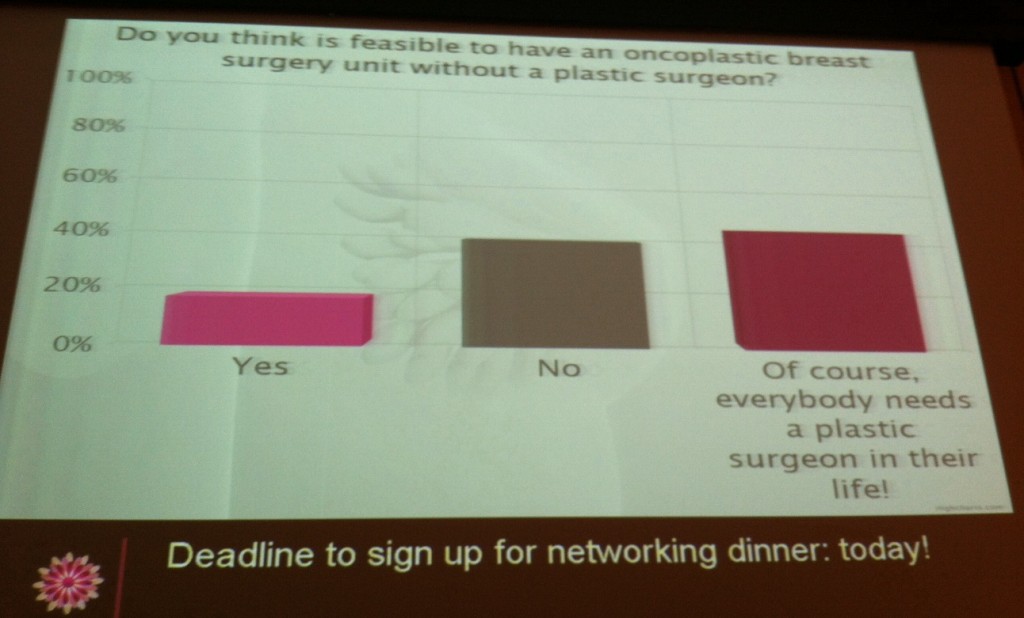
Although most of the BBM attendees were Plastic Surgeons, a majority of respondents felt a Plastic Surgeon is important for oncoplastic breast cancer reconstruction.
In the U.S. and Canada, the Breast Surgeon usually only performs the lumpectomy or mastectomy and the Plastic Surgeon performs the reconstruction, usually at the same procedure. I call this technique “local tissue rearrangement”, or breast reconstruction by breast lift or reduction. In Europe, many Breast Surgeons perform “oncoplastic surgery”, which not only removes the tumor but reconstructs the breast at the same procedure.

Dr. Ava Kwong from Hong Kong presenting at the Barcelona Breast Meeting on Oncoplastic Surgery of the breast

Interestingly, in places other than the United States and Canada, Oncoplastic Surgeons are proficient in reconstruction techniques including implant and pedicled flap reconstruction (usually LD or TRAM), breast reductions, lifts and free fat grafting (“lipofilling’)
My colleague and new friend Dr. Ava Kwong from Hong Kong, a Stanford University graduate, presented on trends in her country and challenges she faces in women with small breasts who are not always accepting of reconstruction, and with the genetic propensity to form keloid or hypertrophic scars.  The concept of “lipofilling” the breast as the primary method of reconstruction was discussed by research Dr. Yves Jean Petit from Italy, who has performed many studies on the safety and science of free fat grafting. In the U.S., it is not currently recommended to perform free fat grafting to a natural breast for the purpose of augmentation, as abnormalities in mammograms such as calcifications and oil cysts resulting from fat that does not heal well may obscure monitoring and cancer detection in the future.
The concept of “lipofilling” the breast as the primary method of reconstruction was discussed by research Dr. Yves Jean Petit from Italy, who has performed many studies on the safety and science of free fat grafting. In the U.S., it is not currently recommended to perform free fat grafting to a natural breast for the purpose of augmentation, as abnormalities in mammograms such as calcifications and oil cysts resulting from fat that does not heal well may obscure monitoring and cancer detection in the future.

Dr. Petit reviewed his scientific research about the safety of free fat grafting (lipofillling) to the breast after breast cancer
I do perform free fat grafting to a reconstructed breast after a mastectomy or in Poland Syndrome correction since we understand that the fat will be going in an area where native breast tissue is no longer/was never present and we are less worried about future mammogram abnormalities. Studies by Dr. Petit to date have shown that adding fat cells to an area of past breast cancer is safe, and is not associated with risks of new cancer growth or recurrence in humans.
The theme of the oncoplastic surgery day was “The aim of breast cancer surgery today is:
- To achieve complete removal of cancer in a single surgery with the maximal aesthetic result.
- Cancer surgery of the breast starts as a reconstructive procedure but ends as an aesthetic one. I completely agree. Bravo! Read my thoughts about body image and breast cancer in a previous blog post.

Dr. Karen Horton presenting to international colleagues from 25 countries at the 2015 Barcelona Breast Meeting
On the next day, reconstructive surgery of the breast was highlighted. I gave three presentations, beginning with a “Breakfast with the Experts” symposium where I spoke about efficiency in the operating room and the use of social media in promoting a Reconstructive Microsurgery of the breast practice.
I did my best to educate international surgeons about why and how I use Facebook, Twitter, my website and blog to provide good, real information and to promote education about breast cancer reconstruction, promotions and special events happening in my office, and to show before and after photos of Plastic Surgery procedures.
I love talking about social media to surgeons because we all use it in a daily setting, but many academics and surgeons in particular are not using it to their advantage. As I quoted in my talk, “If we can master surgery, then we certainly can figure out social media!”

My discussion about operating room efficiency when performing a DIEP flap, SIEA flap or TUG inner thigh flap focused on the TEAM approach, where every member of the surgery performs a vital role

I work together with my Microsurgical partner, Dr. Rudy Buntic for my breast reconstruction cases. We each perform tasks during the surgery and work efficiently to minimize time under anesthesia and provide the very best cosmetic outcome!

In accordance with the theme of the entire Barcelona Breast Meeting,I emphasized AESTHETICS as key as the endpoint of every breast reconstruction procedure
Before I spoke about social media, I took a quick poll of my audience:
- How many of you have a professional website? (very few)
- How many of you have a personal Facebook page? (many – at least half)
- How many of you have a professional Facebook fan page? (none!)
- Who uses Twitter to promote their practice? (one or two) LinkedIn? (none)
- Who has heard of Yelp? (NONE!)
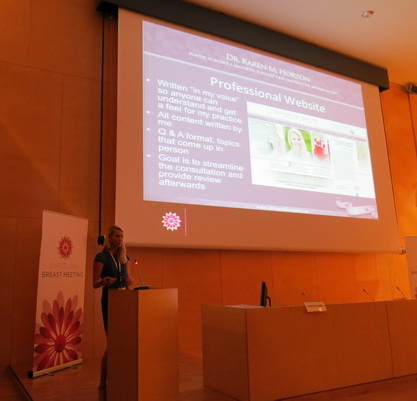
I described how I created my website to allow patients to learn information “in my voice”, with all content written by me and updated at least weekly through blog posts and social media
Coming from the Bay Area where most of us are familiar and comfortable using Facebook, Twitter, Yelp and other online review sites, my social media-naive audience was a change for me. Many attendees are university surgeons for whom social media is a mystery and considering trying to figure it out is overwhelming and intimidating.
Interestingly, I learned that having before and after photos of surgery results are not allowed in Germany from one of the Faculty members who asked questions after my presentation (as it might lead to coercion of patients to undergo surgery)! Wild! My recommendation was to emphasize the emotional connection this surgery has with his patients through real patient testimonials, and perhaps to get fancy and use an App such as this one to create line drawings of actual surgery results:
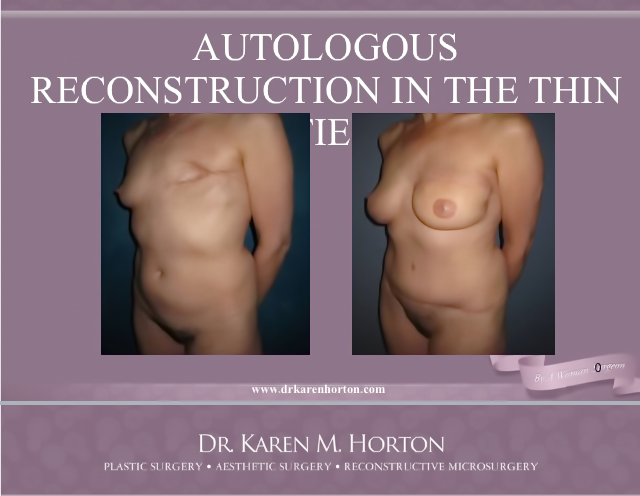
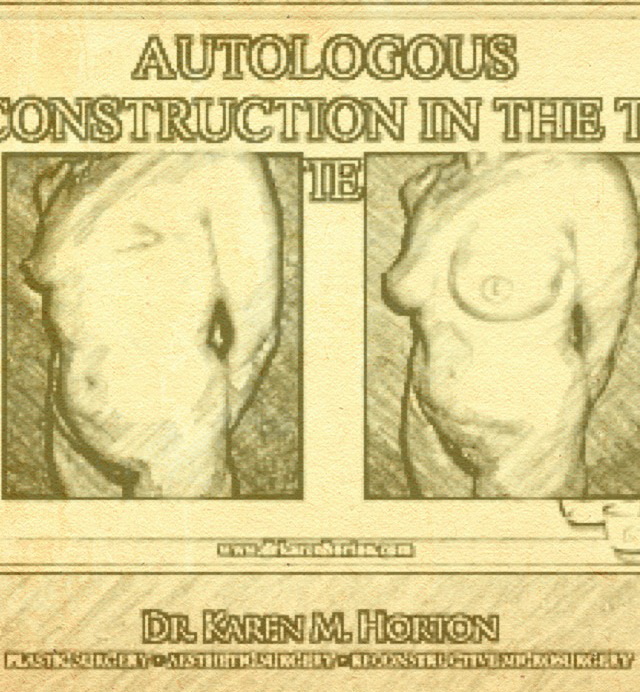 I also described considering my online presence to be a “virtual office” where potential patients and individuals who have recently seen me in consultation for a procedure can review information about surgery and to refresh their memory about what they learned at their visit.
I also described considering my online presence to be a “virtual office” where potential patients and individuals who have recently seen me in consultation for a procedure can review information about surgery and to refresh their memory about what they learned at their visit.
As a Plastic Surgeon where potential patients and their friends/family members are “checking you out”, reviewing your credentials, critically evaluating your surgery results and reading patient testimonials, it is vital for a surgeon to have control over what is being posted to the best of their ability. Social media is extremely important in Plastic Surgery, and I love being so involved!
My other presentations at the Barcelona Breast Meeting included my experience with the TUG inner thigh free flap for breast reconstruction. I was thrilled to meet of the world’s masters of the TUG (which he and many in Europe call the TMG flap), Dr. Thomas Schoeller:
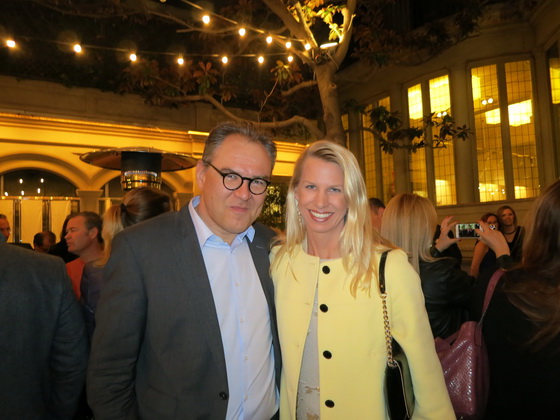
Dr. Thomas Schoeller and Dr. Karen Horton, TMG & TUG flap experts respectively from Germany and the U.S.
Dr. Schoeller performed a live surgery for Poland Syndrome reconstruction in a thin teenage boy using the TUG flap which included reconstruction of the “anterior axillary fold” (the armpit fold that is missing due to congenital absence of the pectoralis major muscle) – an application of the inner thigh flap I am excited to offer my patients as well!
I spoke also about using autologous tissue (free flaps) such as the DIEP or SIEA flap and the TUG for breast reconstruction in extremely thin patients, like many women I see in the San Francisco Bay Area. My solution to this reconstructive challenge: accept a smaller breast reconstruction volume if using the body’s own tissue is our goal, or plan to augment the flap or do free fat grafting 6 months later to achieve a “designer breast reconstruction result” for my patients. Stay tuned for additional blog posts on this topic…
I lectured about mastopexy (breast lift) with or without breast implants in the extreme weight loss patient.
Lastly, I presented a “Disasters of the Masters” case where a complex chest wall reconstruction after recurrent breast cancer that affected BOTH breasts and the entire chest wall skin across the midline became a reconstructive success but a cosmetic “disaster”; the goal was to make breasts out of a “loaf of bread”, or “loaf of BREAST” as my patient lovelingly called her reconstruction. Unfortunately, I received boos from my colleagues as it wasn’t really that much of a disaster (good for my patient!).
It was a pleasure to meet other international surgeons and to receive invitations to visit them in their host countries to continue to present on my areas of expertise in the future.

Sharing an after-dinner drink with surgeons Dr. Cristina Garusi (Italy), Dr. Sinnika Suominem (Finland) and Dr. Eric Santamaria (Mexico)

Meeting an Estonian surgeon, Dr Siim Simmo, at the 2015 Barcelona Breast Meeting. Both of my parents were born in the Baltic country of Estonia!
My favorite night was the farewell dinner for Faculty where I further bonded with colleagues, including the other American Reconstructive Microsurgeons (upcoming ASPS President Dr. David Song and Dr. Maurice Nahabedian) and new friends from England (Dr. Patrick Mallucci), Hong Kong (Dr. Ava Kwong) and Belgium (Dr. Phillip Blondeel):
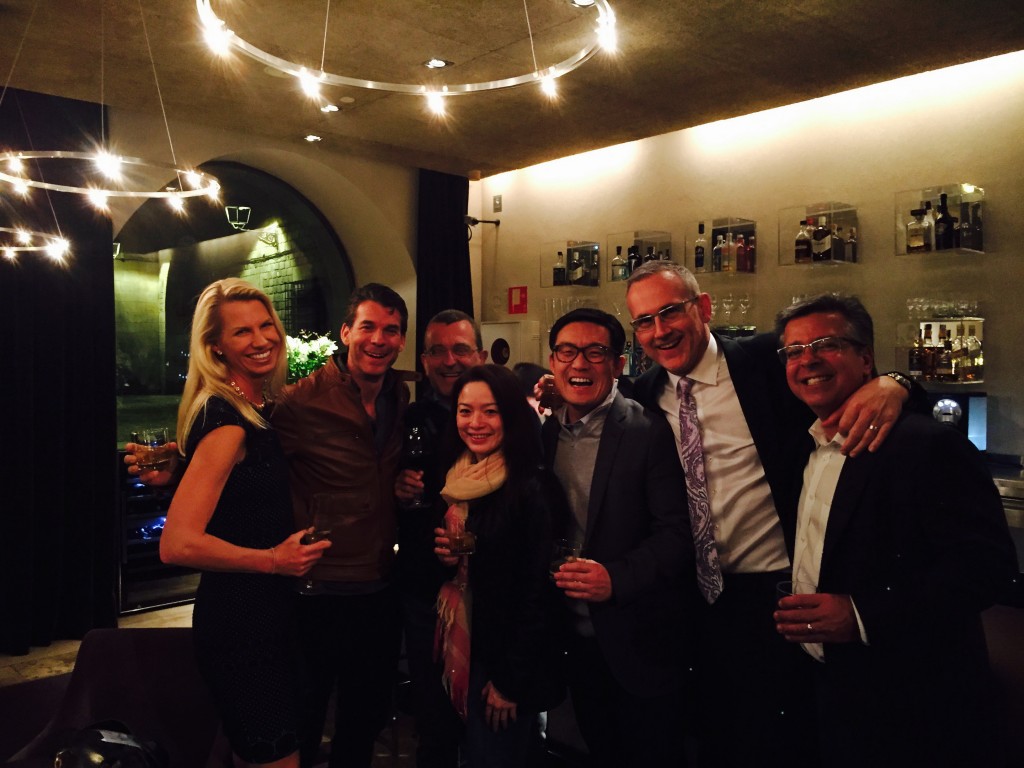
My new friends from Barcelona celebrating the birth of our newly created professional society and social media group, ASSAPS!
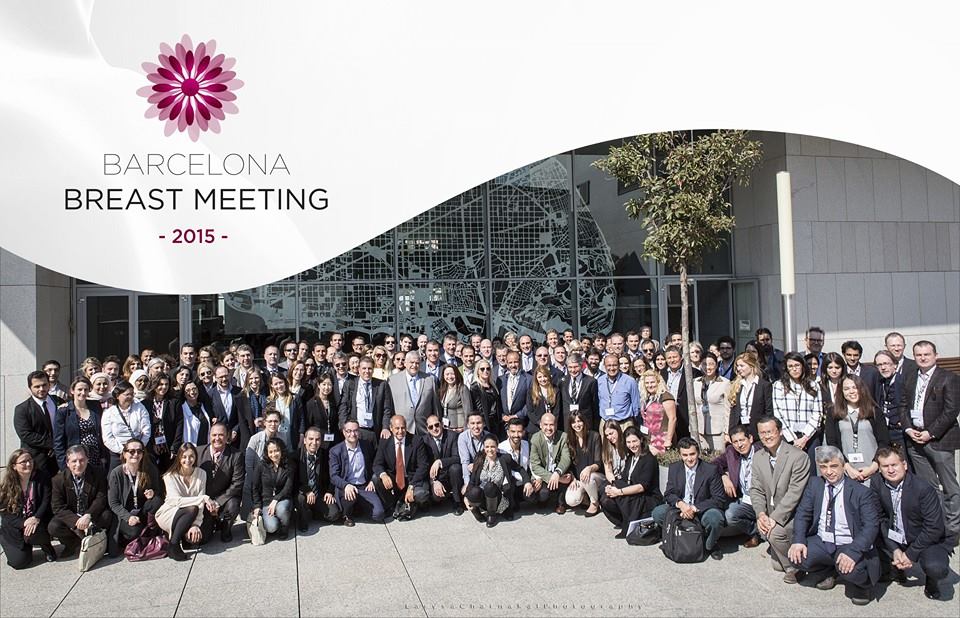
Group photo of all 2015 Barcelona Breast Meeting conference attendees and BBM Faculty members, Barcelona, Spain
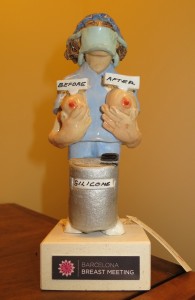 And the most fun memento of the conference is the thank you statue all the Faculty received for presenting at the meeting!
And the most fun memento of the conference is the thank you statue all the Faculty received for presenting at the meeting!
THANK YOU to Dr. Jaume Masia and Dr. (Mister) Jian Farhadi for co-hosting this meeting, my Faculty colleagues for interesting debates and discussions, and to the attendees for asking thoughtful questions and for listening intently to my lectures!
I look forward to returning to Barcelona to explore the city and countryside more, and I hope to be invited back to the Barcelona Breast Meeting again another year.
Karen M. Horton, MD, MSc, FACS, FRCSC


